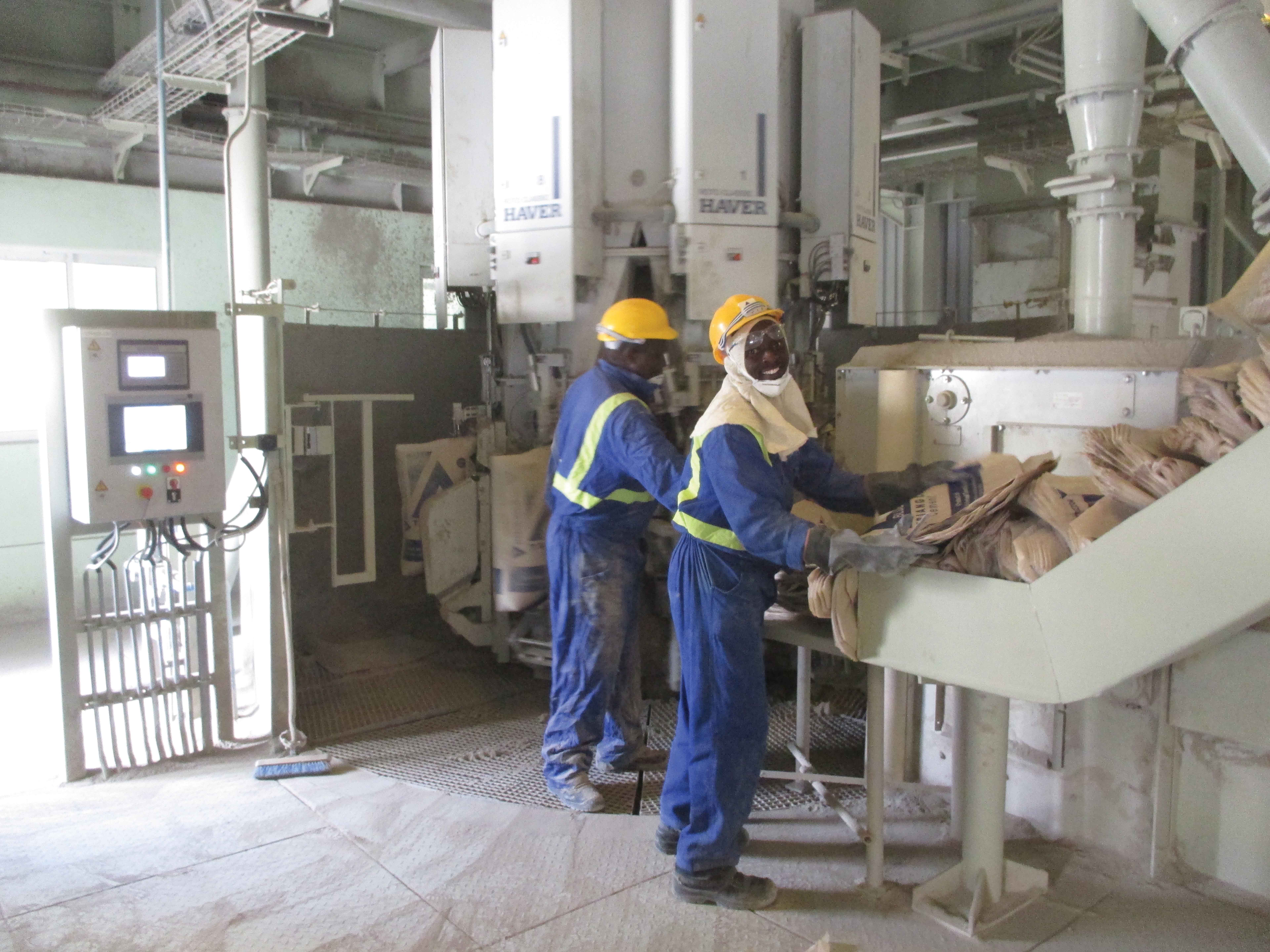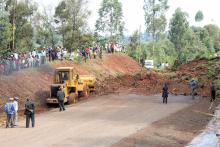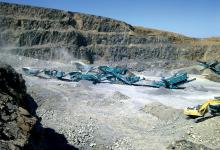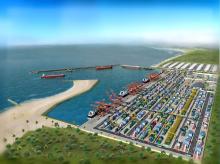
Sky-high cement demand in East Africa, fueled by greater construction investment in countries such as Kenya, Ethiopia, Uganda and Tanzania, is increasing equipment supply to the region – especially from Germany and China. Shem Oirere reports.
With cement demand in East Africa awaiting confirmed growth of between 12.4% and 13.2% in 2015 and further growth tipped to 2018, expansion of current manufacturing capacity is likely, which could result in a major boost for foreign suppliers of cement making equipment and machinery.
East Africa’s installed cement capacity is currently estimated at 15.6 million tonnes, with 8.6 million tonnes of that figure produced in Kenya. Tanzania, Uganda and Rwanda have 4.9, 1.95 and 0.15 million tonnes of cement capacity respectively. The region’s clinker capacity is also estimated to be 5.98 million tonnes, including Kenya’s 3.18 million tonnes. Tanzania, Uganda and Rwanda have an estimated 1.87, 0.86 and 0.07 million tonnes of clinker capacity respectively.
“Despite the headwinds facing countries that are dependent on commodity exports, investors remain bullish over African cement markets, attracted by ongoing strong real GDP growth, forecast to average 4.5% in 2015, rising purchasing power and development of numerous infrastructure and housing projects,” says a recent Africa cement industry analysis by Ecobank.
A new wave of investments has also hit East Africa’s cement industry led by Nigeria-based quoted cement maker
The growth of the region’s cement industry has attracted mechanical and engineering companies from Germany and China, who are now seeking to expand their ties with cement makers in East Africa. “The increasing demand for cement in East Africa is fertile ground for business for German mechanical and plant engineering companies,” says Bernhard Pagenkemper, head of sales at Germany-based
“East-Africa is developing and the cement producers need good equipment to serve the country,” adds Pagenkemper. However the sales boss, who has many years experience dealing with the African cement market, says the ongoing and planned expansion needs “comprehensive evaluation of the needs of cement producers,” to establish whether what East Africa needs is additional capacity or probably a better utilisation of the existing capacities. “Sometimes upgrades or optimisation of equipment is the preferable solution rather than expansion projects,” he says in an interview with ABI, adding that “automatisation” is a keyword.
Although Haver & Boecker is associated with development and production of different packing and screening machines for the raw material processing industry, its share of the African cement industry has been in the supply of its Haver ROTO-PACKER, which is a rotating machine for packing loose, bulk materials at various speed ranges of bags/hour. The machine, which comes either in stationary or rotating format, allows cement to be filled and weighed via three to 16 filling spouts on one rotating machine, using either the impeller type filling process or the air type filling process.
The 128-year-old family-owned German company says its cement valve bag filling machine has a high filling speed of more than 4,000 bags/hour “with minimum bag dimensions.”
The Haver ROTO-PACKER has optimised bag weighing by an electronic weighing system and a filling channel valve that can be adjusted for fine and coarse flow.
According to Pagenkemper, the machinery “is suitable for heavyduty industrial operation, precise, fast and clean.”
In East Africa, Haver & Boecker is keen not only on the supply of the machinery at the initial cement plant construction phase, but all through the cement production process up to “the realisation of turnkey- projects.”
“Of course all these activities are accompanied by services comprising engineering, services, maintenance and full service and operation models,” says Pagenkemper.
“We want to do more than just help the cement producing countries with deliveries; we want to train the people on using the machines and to establish proper services.”
Pagenkemper adds: “Apart from the huge demand of cement as a commodity, the market soon will demand higher quality of products, diversified product as special cements for different applications and ready-mixed products ready for use for professional applications.” Going forward, Haver & Boecker plans to partner with cement manufacturers and other mortar producers in East Africa to prepare for an anticipated surge in demand for prefabricated Do-It-Yourself (DIY) products.
“Cement demand in Kenya, Ethiopia, Tanzania and Uganda is predicted to grow continuously throughout the next two decades,” says Jan Schmidt, Gebr. Pfeiffer’s regional manager Sub-Sahara Africa. “Increased independence from imports, expansion of domestic production capacities, new factories and even new market entrants characterise the cement sector in the East Africa community markets,” he tells ABI.
Gebr Pfeiffer has been involved in Africa’s cement production for more than 40 years, with multinationals and local partners such as
“We are technology drivers in Vertical Roller Mills (VRMs) for cement raw materials, solid fuel for the kilns and for the grinding of various cement qualities,” says Schimdt.
He said the company’s clients in East Africa, especially in Ethiopia and Sudan, prefer the VRMs as opposed to the traditional ball mills because “of their energy efficiency, extended maintenance cycles and reduced down-times of plant which results in overall higher plant availability and competitiveness.”
Gber Pfeiffer’s selling point for its VRMs is the equipment’s capacity to “go where no ball mill can.”
“Our VRM can grind, separate and dry in a single process step,” says Schmidt. The VRMs allow cement producers to “substitute previous multi-mill strategies for one-mill solution, thus less capital expenditure, a more compact footprint of plant and reduced energy consumption.” He says like many cement equipment suppliers, Gebr Pfeiffer has also been involved in supervising machinery installation, training of clients’ operators during the start-up phase, maintenance supervision and long-term spare and wear parts supply.
However, the German cement equipment and machinery manufacturers and suppliers have to contend with competition from competitors from the world’s largest economy, China.
Schmidt contends that there are “new Chinese vertical mill manufacturers entering the international markets” including Africa, but expresses confidence in Gebr Pfeiffer’s MPS and MVR mills which “are widely accepted as the proven workhorse of the cement industry.” Cement manufacturers in East Africa also seek specialist contractors to put up new cement plants, with Schmidt saying “the so-called ‘full liners’ from Europe, the Americas and Asia compete to build turnkey facilities for their African clients, who very often reserve the right to choose key equipment options like grinding mills from third party process and technology suppliers.”
“We do routinely cooperate with all major contractors, many of whom are of Chinese origin,” says Schmidt.
Some Chinese cement machinery makers and suppliers may also take advantage of the increasing demand for the construction material to find new growth areas in the continent’s cement industry because of perceived less competition and increasing acceptance of companies from the East Asia economic giant.
Some companies such as China National Building Material Group Corporation, China Railway Construction Corporation, Jidong Development and Northern Heavy Industries Group are already involved in Africa’s cement industry especially in construction of new plants. Northern Heavy Industries was, for example, involved in the construction of the 1.4 million tonne capacity Habesha Cement plant in Ethiopia for the State-run company Holeta.
With East Africa’s construction on the upward swing, international manufacturers of cement machinery and equipment could be forced to expand their order books, as many cement makers in the region seek additional and technologically-savvy facilities that would ensure increased high quality production at less cost.








